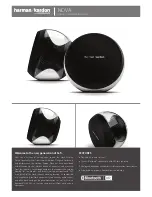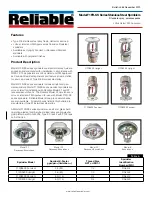
16
HEAT PUMP OPERATION
Cooling Cycle
When the heat pump is in the cooling cycle, it operates
exactly as a Summer Air Conditioner unit. In this mode,
all the charts and data for service that apply to summer
air conditioning apply to the heat pump. Most apply on
the heating cycle except that “condenser” becomes
“evaporator”, “evaporator” becomes “condenser”, “cooling”
becomes “heating”.
Heating Cycle
The heat pump operates in the heating cycle by redirecting
refrigerant flow through the refrigerant circuit external to
the compressor. This is accomplished with through the
reversing valve. Hot discharge vapor from the compressor
is directed to the indoor coil (evaporator on the cooling
cycle) where the heat is removed, and the vapor
condenses to liquid. It then goes through the expansion
device to the outdoor coil (condenser on the cooling cycle)
where the liquid is evaporated, and the vapor goes to the
compressor.
When the solenoid valve coil is operated either from
heating to cooling or vice versa, the piston in the reversing
valve to the low pressure (high pressure) reverse positions
in the reversing valve.
The following figures show a schematic of a heat pump
on the cooling cycle and the heating cycle. In addition
to a reversing valve, a heat pump is equipped with an
expansion device and check valve for the indoor coil, and
similar equipment for the outdoor coil. It is also provided
with a defrost control system.
The expansion devices are flowrator distributors and
perform the same function on the heating cycle as on the
cooling cycle. The flowrator distributors also act as check
valves to allow for the reverse of refrigerant flow.
When the heat pump is on the heating cycle, the outdoor
coil is functioning as an evaporator. The temperature
of the refrigerant in the outdoor coil must be below
the temperature of the outdoor air in order to extract
heat from the air. Thus, the greater the difference in the
outdoor temperature and the outdoor coil temperature,
the greater the heating capacity of the heat pump. This
phenomenon is a characteristic of a heat pump. It is
a good practice to provide supplementary heat for all
heat pump installations in areas where the temperature
drops below 45° F. It is also a good practice to provide
sufficient supplementary heat to handle the entire heating
requirement should there be a component failure of the
heat pump, such as a compressor, or refrigerant leak, etc.
Since the temperature of the refrigerant in the outdoor
coil on the heating cycle is generally below freezing point,
frost forms on the surfaces of the outdoor coil under
certain weather conditions of temperature and relative
humidity. Therefore, it is necessary to reverse the flow
of the refrigerant to provide hot gas in the outdoor coil
to melt the frost accumulation. This is accomplished by
reversing the heat pump to the cooling cycle. At the same
time, the outdoor fan stops to hasten the temperature
rise of the outdoor coil and lessen the time required for
defrosting. The indoor blower continues to run and the
supplementary heaters are energized.
Defrost Control
Note:
DBH models have one stage of mechanical heating.
The defrost accumulation period will start when either
first or second stage defrost thermostat closes. Defrost
termination occurs when both thermostats open or the 10
minute cycle has completed.
Summary of Contents for DBC Series
Page 44: ...44...
Page 45: ...45...
Page 46: ...46 THIS PAGE IS INTENTIONALLY LEFT BLANK...
















































